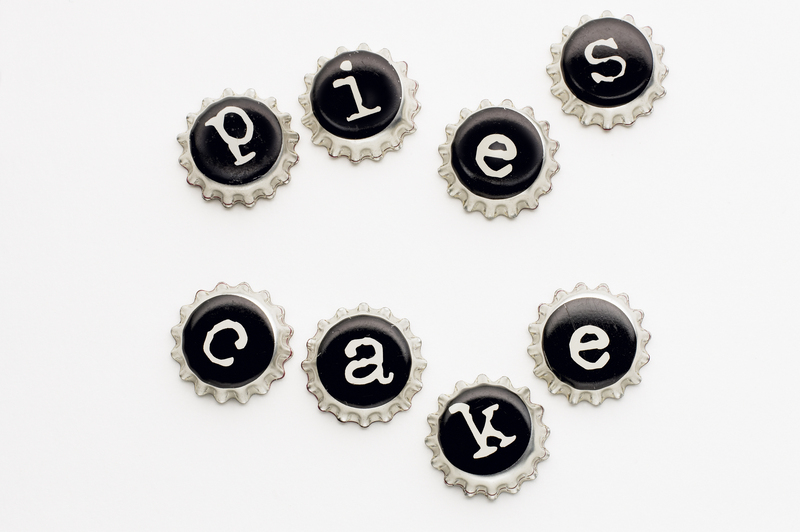Regain Control of Your Space with Hoarder Clean Up and Clutter Removal
Living in a cluttered or hoarded environment often leads to stress, anxiety, and a diminished quality of life. If you're feeling overwhelmed by mess or suffocated by unnecessary belongings, it's time to regain control of your space with comprehensive hoarder clean up and clutter removal solutions. This in-depth guide will walk you through the process, benefits, strategies, and resources available to help reclaim your home--and your peace of mind.

Understanding Hoarding and Clutter: What's the Difference?
While both hoarding and general clutter relate to the accumulation of items, they differ significantly in severity and root causes. It's crucial to recognize these differences so you can choose the most effective approach to hoarder clean up and clutter removal.
What is Hoarding?
Hoarding is a complex psychological condition characterized by an excessive collection of items and an inability or unwillingness to discard them, regardless of their actual value. Hoarders may accumulate everything from newspapers and clothing to food, pets, or even garbage. This accumulation can result in dangerous living conditions, health hazards, and severe emotional distress.
What is Clutter?
Clutter refers to the untidy collection of belongings that may not necessarily stem from mental health issues but can lead to frustration and hamper daily life. Common sources of clutter include busy schedules, lack of organization, and sentimental attachments.
- Hoarding is a chronic condition with deep psychological roots.
- Clutter is typically less severe and more manageable with routine cleaning.
The Impact of Clutter and Hoarding on Your Life
A messy home isn't just unsightly; it can severely impact your physical health, relationships, and well-being. Here's how unresolved hoarding and excessive clutter can affect your daily life:
Physical Health Risks
- Increased risk of trips, slips, and falls due to blocked walkways
- Dust mites, mold, and pest infestations contributing to allergies and respiratory issues
- Unsafe living conditions: blocked exits, fire hazards, and inaccessible bathrooms or kitchens
Mental and Emotional Health Challenges
- Intense feelings of shame or embarrassment
- Difficulty relaxing or concentrating at home
- Isolation from friends or family due to embarrassment
- Increased anxiety and potential for depression
Strained Relationships
- Frequent arguments about cleaning and storage solutions
- Family conflicts regarding what to keep or discard
- Lack of space for guests and social activities
Benefits of Hoarder Clean Up and Clutter Removal
Deciding to confront hoarding and remove clutter from your living space can be life-changing. These are just a few of the key advantages you can expect to experience:
- Enhanced safety and accessibility of your home
- Improved air quality and reduced allergens
- Lowered stress and anxiety levels
- Strengthened relationships with loved ones
- More space for hobbies, relaxation, and daily life
- Increased home value and marketability
Regaining control of your environment translates directly to regaining control over your life.
How to Begin: Step-by-Step Hoarder Clean Up and Clutter Removal Process
Feeling daunted by the prospect of tackling years' worth of stuff? You're not alone. The key is to break the process into manageable steps and, where possible, seek expert support. Here's a structured approach to successful clutter removal and hoarder clean up:
Step 1: Assess the Situation
- Identify problem areas: Walk through your home and note areas with the highest accumulation.
- Determine severity: Differentiate between general clutter and hoarding situations for appropriate planning.
- Set realistic goals: Decide which rooms or spaces to tackle first.
Step 2: Assemble Your Team and Tools
- Recruit trusted family members or friends for motivation and support.
- Consider hiring specialized hoarder clean up professionals if the situation is severe.
- Gather supplies such as heavy-duty trash bags, bins, gloves, face masks, and cleaning products.
Step 3: Sort and Organize
- Sort items into categories: keep, donate, recycle, or discard.
- Use clearly labeled boxes or bags for each category to avoid confusion.
- Avoid creating a "maybe" pile that can slow down the process.
Tip: Use the "one touch" rule--handle each item only once before deciding its fate.
Step 4: Remove Clutter and Dispose Responsibly
- Immediately remove trash, recycling, and donation items from your home.
- Contact local donation centers or schedule drop-offs for unwanted items in good condition.
- Arrange for junk removal services or large dumpsters for extensive clean ups.
Step 5: Deep Clean and Sanitize
- Vacuum, mop, and dust all cleared areas.
- Disinfect surfaces to eliminate allergens and bacteria.
- Seal cracks and repair minor damages revealed during cleaning.
Step 6: Implement Organization Systems
- Invest in storage solutions like shelves, bins, and organizers.
- Maintain a "one in, one out" policy to prevent new clutter from accumulating.
- Establish a regular cleaning schedule to keep things under control.
When to Call the Professionals: Hoarder Clean Up Services Explained
Not all cluttered spaces require professional help. However, hoarding clean up services are essential in situations where:
- There are biohazards such as mold, pests, animal waste, or bodily fluids.
- The amount of clutter creates unsafe or uninhabitable conditions.
- Physical or mental health concerns prevent safe self-cleaning.
- A home must be cleaned urgently for sale, rental, or compliance reasons.
Professional clutter removal companies are equipped with training, tools, and compassion to restore safe living conditions and treat each case with dignity.
Key Features of Reliable Hoarder Clean Up Services
- Confidentiality: All work is carried out discreetly to protect your privacy.
- Compassionate approach: Staff understand the emotional difficulties associated with hoarder clean up and treat clients with respect.
- Comprehensive cleaning: Includes not just removal, but deep cleaning, sanitization, and hazard remediation.
- Customized plans: Tailored solutions based on the severity and type of hoarding or clutter problem.
- Follow-up visits: Many services offer check-ins or ongoing maintenance to prevent re-accumulation.
DIY Hoarder Clean Up & Clutter Removal: Tips for Success
If you're tackling the challenge yourself, here are some expert-approved, practical tips:
- Start small: Clear one section at a time; avoid overwhelming yourself.
- Set a timer: Work in set increments (e.g., 30 minutes) with breaks.
- Ask for help: Don't be afraid to enlist friends or family for support.
- Practice self-care: Take breaks and reward yourself for milestones.
- Be patient: Years of clutter can't be resolved in a day--consistency is key!
Clutter Prevention: Maintaining a Tidy, Organized Home
Once you've invested time and effort in hoarder clean up and clutter removal, keeping your space orderly is much easier with these strategies:
1. Daily Decluttering Habits
- Spare a few minutes each day to tidy up high-traffic areas.
- Return items to their designated spots after use.
- Sort mail immediately; recycle or file papers to prevent buildup.
2. Regular Deep Cleans
- Schedule monthly or quarterly deep-cleans for closets, pantries, and storage.
- Reassess and purge unused or duplicate items seasonally.
3. Smart Storage Solutions
- Utilize stackable bins, drawer organizers, and vertical shelving.
- Label storage containers for easy access and inventory control.
4. Mindful Shopping Habits
- Ask yourself if new purchases are truly necessary before buying.
- Try to adopt a "one in, one out" approach to keep clutter at bay.
Emotional Support & Mental Health: Addressing the Roots of Hoarding
For many, the struggle with clutter or hoarding is rooted in emotional challenges or mental health conditions, such as anxiety, depression, OCD, or trauma. Seeking professional support is vital for sustainable recovery and lasting change.
- Speak with a therapist or counselor specializing in hoarding behavior.
- Join support groups, either in-person or online.
- Educate loved ones about hoarding to foster understanding and patience.
Resources for Hoarder Clean Up and Clutter Removal
Tackling hoarding and clutter alone can be overwhelming. Fortunately, there are many resources available to assist you:
- The Hoarding Disorder Resource and Training Group
- National Alliance on Mental Illness (NAMI)
- Children and Adults with Attention-Deficit/Hyperactivity Disorder (CHADD)
- Local professional clutter removal specialists and junk removal services
- Community outreach programs for free or low-cost clean up support

Frequently Asked Questions
1. How long does hoarder clean up take?
It depends on the severity and extent of clutter or hoarding. Minor clutter can be cleared in a day, while severe hoarding may require several days or more with professional help.
2. Is hoarding covered by insurance?
Some homeowner's policies may cover damage from hoarding-related issues (e.g., mold, pests), but cleaning services are typically out-of-pocket. Contact your insurer for specific details.
3. Can hoarding be cured?
Hoarding is a chronic condition but can be managed effectively with ongoing therapy, support, and clutter removal strategies.
Conclusion: Take the First Step Toward Freedom & Serenity
Restoring order in your home doesn't have to be an impossible challenge. With a combination of self-help, emotional support, and, when needed, professional hoarder clean up services, you can regain control of your space and enjoy the benefits of a healthier, happier lifestyle. Don't let clutter hold you back--take decisive action today and experience the freedom of an organized, stress-free home!



